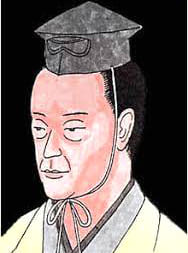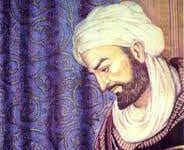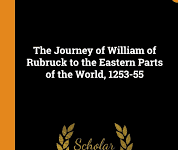“Zeami Motokiyo (1363-1443) was a Japanese playwright, actor, and poet, widely regarded as the father of Noh theater. His profound contributions to Japanese drama, through both his plays and theoretical writings, continue to shape the art of performance.”
Zeami Motokiyo: Introductory
Zeami Motokiyo (1363-1443) was a Japanese playwright, poet, and performer who lived during the Muromachi period in Japan. He is widely regarded as one of the most important figures in the history of Japanese theater and one of the greatest playwrights in world theater.
Zeami Motokiyo was born into a family of performers and was trained from an early age in the art of Noh theater. His father, Kan’ami, was a famous performer and playwright who was instrumental in the development of Noh theater. Zeami learned from his father and went on to become a talented performer and playwright in his own right.
Zeami Motokiyo is best known for his contributions to Noh theater, which is a form of classical Japanese musical drama that is characterized by its use of masked actors, elaborate costumes, and highly stylized movement. Zeami wrote many plays that are still performed today and is considered to be the greatest master of Noh theater.
In addition to his contributions to Noh theater, Zeami was also an accomplished poet and wrote many poems that reflected his philosophy and beliefs. He was a devout Buddhist and believed in the importance of using art to elevate the human spirit. He saw theater as a means of spiritual expression and sought to create plays that would evoke a sense of transcendence in the audience.
Zeami Motokiyo’s most famous work is “Fushi Kaden,” a treatise on the art of Noh theater that is still widely read and studied today. In this work, Zeami outlines his theory of Noh theater, which is based on the principles of “yugen” (subtle elegance) and “ma” (the interplay of positive and negative space). He argues that Noh theater should be a spiritual experience that transcends the physical world and that the goal of the actor should be to evoke a sense of mystery and awe in the audience.
Zeami Motokiyo’s influence on Japanese theater and culture was profound, and his legacy continues to this day. He is widely regarded as a genius and a master of his art, and his plays and treatises are considered to be some of the most important works in the history of Japanese theater.
In conclusion, Zeami Motokiyo was a multi-talented artist, playwright, and poet who made a lasting impact on Japanese theater and culture. He is remembered as one of the greatest figures in the history of Japanese theater and his contributions continue to inspire and influence performers and audiences around the world. 0 0 0.
Zeami Motokiyo: Biography
Introduction
Zeami Motokiyo (世阿弥 元清), brought into the world in 1363, was a Japanese writer, entertainer, and artist who is viewed as perhaps of the main figure in the improvement of Noh theater, an old style type of Japanese show that mixes dance, music, and verse. He lived during the Muromachi time frame (1336-1573), a period set apart by political choppiness and social refinement. His impact on Japanese theater and verse is enormous, and he is credited with molding Noh into a fine art that has made due and flourished over hundreds of years. His works and hypothetical compositions keep on being read up for their profundity, tastefulness, and significant comprehension of human instinct.
Early Life and Background
Zeami Motokiyo was naturally introduced to a group of entertainers. His dad, Kan’ami Kiyotsugu, was a prestigious Noh entertainer and dramatist who assumed a critical part in fostering the specialty of Noh. Zeami, since early on, was presented to the universe of execution and theater, gaining the complexities of Noh acting and showmanship from his dad. Kan’ami’s relationship with the shogunate and support from strong figures, like the shogun Ashikaga Yoshimitsu, fundamentally helped Zeami’s initial profession.
At 12 years old, Zeami Motokiyo acted before Ashikaga Yoshimitsu, the most impressive figure in Japan at that point. Yoshimitsu was so intrigued by Zeami’s ability and charm that he turned into his benefactor, giving the youthful entertainer potential chances to foster his abilities. This relationship with the shogunate permitted Zeami to ascend to noticeable quality in the Japanese social scene and gave him the assets to refine and lift Noh theater.
Commitments to Noh Theater
Zeami’s commitment to Noh theater was both creative and scholarly. As a writer, he composed more than 50 plays, a significant number of which remain key to the Noh collection. His works, like Atsumori, Izutsu, and Takasago, are noted for their fragile mixing of verse, music, and development. They investigate topics of adoration, misfortune, honor, and the vaporous idea of life, all introduced through emblematic language and adapted execution.
Past his plays, Zeami Motokiyos hypothetical works on the craft of Noh are maybe his most getting through inheritance. His compositions, especially ‘Fūshi Kaden’ (The Transmission of the Bloom of Acting Style), offer significant bits of knowledge into the way of thinking and feel of Noh. In these works, Zeami underlines the idea of “yūgen,” or nuance and effortlessness, which he accepted to be the quintessence of magnificence in Noh. He likewise presented the idea of “hana” (the bloom), an illustration for the momentary and steadily changing nature of an entertainer’s allure.
Zeami focused on the significance of preparing and discipline in accomplishing creative greatness. His concept of “monomane” (impersonation) expected entertainers to not just duplicate the activities and feelings of their characters however to incorporate them, consequently making their exhibitions more valid and convincing. Zeami accepted that genuine imaginativeness lay in the capacity to bring out feelings in the crowd through controlled nuance as opposed to obvious showcases of feeling.
Compositions and Theories
Zeami’s hypothetical works, aggregately known as the ‘Zeami Jūroku-bu-shū’ (Zeami’s Sixteen-Section Compositions), dig profoundly into the feel, reasoning, and methods of Noh execution. These texts, composed for people in the future of Noh entertainers, frame the profound and specialized venture that an entertainer should embrace. His works are still exceptionally respected for their philosophical profundity and act as an establishment for understanding Noh theater as well as more extensive Japanese style.
Perhaps of his most significant work, ‘Fūshi Kaden’, frames the movement of an entertainer’s vocation, from early preparation to accomplishing imaginative development. He examines the different “phases of the blossom” in an entertainer’s turn of events, each addressing an alternate degree of dominance and nuance. Zeami considered the craftsman’s excursion to be one of steady development, where even the most gifted entertainers should keep on developing their ability and adjust to the consistently changing preferences of the crowd.
One more fundamental text, ‘Kakyō’ (A Mirror Held to the Blossom), develops the possibility of “hana” and the significance of timing and musicality in execution. Zeami accepted that the magnificence of Noh lies in its harmony between the seen and the concealed, the communicated and the suggested. This idea is well established in Harmony Buddhist way of thinking, which affected a lot of Zeami’s work.
Decline and Later Life
Notwithstanding his accomplishments and the support of strong figures, Zeami’s later years were set apart by private and political difficulties. After the demise of Ashikaga Yoshimitsu, the shogun’s replacements were less steady of Zeami, and his impact at court faded. His stepson, Komparu Zenchiku, took over initiative of their Noh school, and Zeami in the long run resigned from dynamic execution and composing. He spent his later years in relative haziness, composing compositions on the craft of Noh and considering his all consuming purpose.
In 1434, Zeami Motokiyowas banished to Sado Island, a distant island in the Ocean of Japan. The explanations behind his exile stay hazy, yet an estimate that it was because of political struggles or competitions inside the Noh people group. While on Sado, Zeami proceeded to compose and think about his profession and the eventual fate of Noh theater. He got back to Kyoto following quite a while, where he spent the rest of his life.
Zeami died in 1443, abandoning a heritage that significantly molded Japanese theater and culture.
Legacy
Zeami Motokiyo’s effect on Japanese auditorium is limitless. He is frequently contrasted with other extraordinary dramatists of world theater, like Shakespeare, for the profundity and wealth of his works. His commitments to Noh theater laid out it as a significant type of social articulation in Japan, and his plays keep on being performed today. Zeami’s compositions on feel, execution, and the way of thinking of craftsmanship remain fundamental texts in Japanese writing and are concentrated by entertainers, researchers, and understudies of theater all over the planet.
Noh theater, with its refined feel and reflective characteristics, owes quite a bit of its endurance and proceeded with significance to Zeami’s vision. How he might interpret human inclination, his dominance of representative language, and his commitment to the art of execution have guaranteed that Noh stays an imperative and respected work of art in Japan’s social legacy.
Conclusion
Zeami Motokiyo, through his plays, verses, and significant hypothetical works, changed Noh into a modern fine art that addresses general human feelings and encounters. His inheritance as a writer and scholar keeps on impacting Japanese venues as well as the worldwide comprehension of sensational workmanship. As the dad of Noh theater, Zeami’s commitments stay getting through a piece of Japan’s social history, motivating ages of entertainers and crowds the same. 0 0 0
Zeami Motokiyo: Frequently Asked Questions
Q1: Who was Zeami Motokiyo?
A: Zeami Motokiyo (1363-1443) was a Japanese playwright, actor, and poet who is regarded as the father of Noh theater. He wrote numerous plays and theoretical works that shaped the development of Noh during the Muromachi period.
Q2: What is Zeami best known for?
A: Zeami is best known for his contributions to Noh theater, both as a playwright and as a theorist. His most famous plays include ‘Atsumori’, ‘Izutsu’, and ‘Takasago’. He also wrote treatises on Noh performance and aesthetics, such as ‘Fūshi Kaden’ (The Transmission of the Flower of Acting Style).
Q3: What is the concept of “hana” introduced by Zeami?
A: “Hana,” meaning “flower,” is a metaphor introduced by Zeami that represents the performer’s charm or appeal to the audience. It refers to the actor’s ability to create moments of beauty that captivate and engage the viewer.
Q4: What is “yūgen,” and why is it important in Zeami’s works?
A: “Yūgen” refers to the concept of subtlety, grace, and profound beauty that is not overt but hinted at. It is central to Zeami’s understanding of Noh theater, where understated emotions and gestures create deeper emotional impact.
Q5: How did Zeami influence Noh theater?
A: Zeami Motokiyo transformed Noh from a popular entertainment into a highly stylized and sophisticated art form. Through his plays and theoretical writings, he laid down guidelines for acting, playwriting, and performance that are still followed today.
Q6: What is Zeami’s most famous theoretical work?
A: Zeami’s most famous theoretical work is ‘Fūshi Kaden’ (The Transmission of the Flower of Acting Style), which outlines his philosophies on Noh theater, actor training, and performance aesthetics.
Q7: What role did Ashikaga Yoshimitsu play in Zeami’s career?
A: Ashikaga Yoshimitsu, the shogun of Japan during Zeami’s youth, became his patron after being impressed by Zeami’s performance at age 12. This support helped elevate Zeami’s career and the status of Noh theater.
Q8: Why was Zeami exiled, and where did he go?
A: Zeami Motokiyo was exiled to Sado Island in 1434, possibly due to political conflicts or rivalries within the Noh theater community. He later returned to Kyoto.
Q9: What is Zeami’s legacy in world theater?
A: Zeami is often compared to other great playwrights like Shakespeare for his profound impact on theater. His works and ideas about aesthetics, performance, and human emotion continue to influence Japanese theater and global dramaturgy.
Q10: How did Zen Buddhism influence Zeami’s works?
A: Zen Buddhism influenced Zeami’s works by emphasizing the transient nature of life and the beauty of subtlety and minimalism. His approach to Noh reflects Zen principles of simplicity, restraint, and spiritual depth.
Zeami Motokiyo: Facts
- Birth and Death: Zeami Motokiyo was born in 1363 and died in 1443.
- Father of Noh Theater: Zeami is considered the father of Noh theater, one of Japan’s most classical and refined performance arts.
- Famous Playwright: He wrote over 50 Noh plays, many of which remain central to Noh theater today, including ‘Atsumori’, ‘Izutsu’, and ‘Takasago’.
- Philosopher and Theorist: Zeami wrote extensively on Noh aesthetics, performance techniques, and actor development, with his most famous work being ‘Fūshi Kaden’ (The Transmission of the Flower of Acting Style).
- Concept of “Hana”: He introduced the concept of “hana” (the flower), a metaphor for the actor’s charm and ability to engage the audience.
- Yūgen: Zeami emphasized “yūgen,” a key aesthetic in Noh, which represents subtlety, grace, and the mysterious beauty of human experience.
- Patronage of Ashikaga Yoshimitsu: Zeami was supported by Ashikaga Yoshimitsu, the powerful shogun, after performing before him at the age of 12.
- Exile: Zeami was exiled to Sado Island in 1434, though he eventually returned to Kyoto.
- Legacy: Zeami’s contributions to theater are often compared to Shakespeare’s, with lasting influence on Japanese culture and global theater.
- Zen Influence: His works and philosophy were deeply influenced by Zen Buddhism, focusing on the impermanence of life and the beauty of subtle emotions.
N. B. This article originally belongs to the book, ‘Brief Biographies of Ancient Thinkers and Writers‘ by Menonim Menonimus.
Books of Biography by M. Menonimus:
- The World Writers-Brief Biographies
- Introduction to World Writers
- Introduction to World Personalities
- Love of Reputed Persons ..
Additional Searches:











